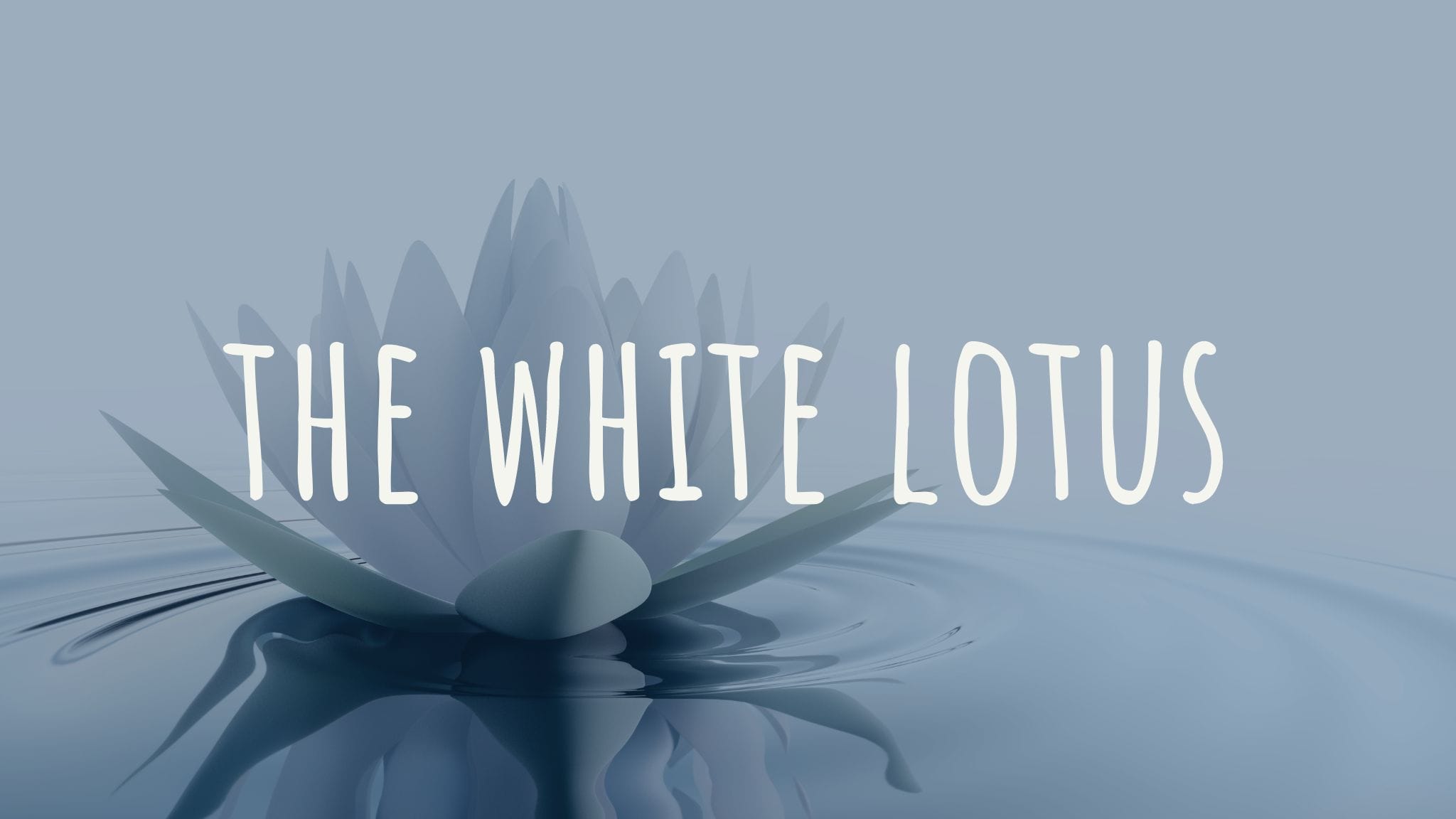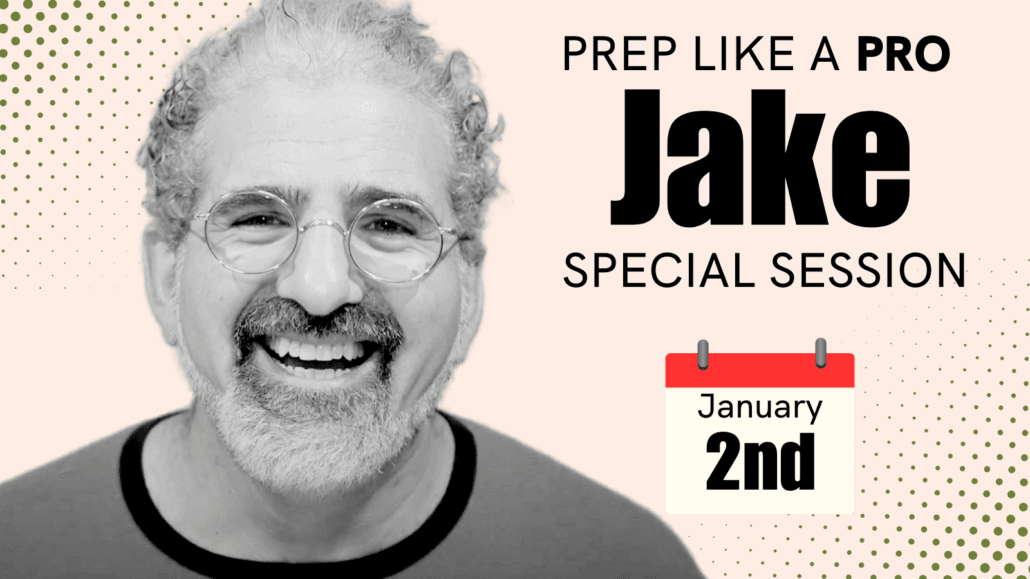The White Lotus: Engine of a Limited Series
This week, we’re going to be looking at The White Lotus, Season 1 and Season 2, and through The White Lotus we’ll be looking at a really important concept in writing for TV: the TV Series Engine. We’re going to be learning how to build an engine for a limited series, and how to apply those concepts to any kind of series– whether it’s a TV drama, comedy, dramedy, or anything in between.
To understand how the engine of The White Lotus works, let’s start by talking about what the engine of a TV show actually is.
The engine of a TV show is the collection of consistent elements that allow that show to feel both similar and different at the same time.
When you sell a TV pilot, you are not just selling a great story: you’re actually selling a blueprint. You’re selling a model for a kind of storytelling that can produce episode after episode, and in which each episode will feel both similar and different from the others. That blueprint is the engine, and it’s something you need to understand when you’re writing for TV.
When you tune into your favorite shows, you’re coming for a familiar feeling: to hang out with specific characters and to see them act a certain way. But you also want to feel like you’re going on a journey, and you want to be surprised. So you want it to feel different and similar at the same time.
In a way, every show is like a franchise: just like a McDonald’s! Every episode has a certain feeling in common, and each show has certain elements that are designed to generate that feeling. While you can play around with those elements, if you change too many of them, you break your engine.
If you break the engine of a TV show, the show either peters out because you can no longer sustain the drama, or you end up losing its audience because you no longer have the feeling.

On the simplest level, a limited series like The White Lotus is really just a giant movie, so the engine works differently than in a traditional TV comedy, drama or dramedy series.
Normally, when a limited series is conceived (what used to be called a miniseries) it’s conceptualized like a giant movie. Each episode is designed to feel similar to the ones that preceded it, while also being different enough to hold your interest.
Each episode is designed to double down on– or, in improv terms, “Yes, and”– everything that’s happened before, until it’s all boiled up into a giant mess that gets resolved in the final episode.
The structure of a limited series is very similar to that of a movie. While a movie might have seven acts (the way I teach it in my Write Your Screenplay class), The White Lotus has six “acts” in Season 1, and seven “acts” in Season 2. Except in a limited series, we call these acts episodes, and they are broken down into smaller acts inside each of those episodes and into scenes within that.
In a limited series, you have to think about the engine in terms of how each episode relates to the others– but normally, when you conceive a limited series, you don’t design a season engine. In other words, you’re conceiving it as a single product, not as something you’re going to replicate season after season.
But of course, what tends to happen when a limited series is successful is that we want it again, and that limited series ends up turning into a series, just like The White Lotus.
One of the big differences between a TV series and a movie is that movies are designed to create catharsis: when we get to the end of a movie or limited series, we want to feel a feeling of completion. We’ve gone through this journey with these characters and we’ve reached an end. And that end, whether it’s tragic, or comic, or somewhere in between, allows us to feel like we’ve purged something in ourselves.
On the other hand, traditional TV series screenwriting works by refusing that feeling, refusing the catharsis: in Breaking Bad, we’re not going to get catharsis until we get to the very final episode and Walter finally admits that he likes it. We’re not going to get that catharsis until we’ve made it through the entire series.
This is where a limited series tends to work more like a movie. In a limited series, by the time we get to the end of the season, we’re usually going to have a feeling of completion, just like in a movie.
That’s why it’s harder to build an engine for a limited series than it is for a traditional pilot. A traditional pilot just has to tangle up a knot, and each season needs to deepen the entanglement so we can keep on going forever, whereas a limited series is designed to give us a feeling of completion.
So how do we start it up all over again, after we’ve killed a bunch of the elements and brought everything to a reasonable conclusion?
The good news is, as you can see from The White Lotus, you can turn anything into a series. You just have to figure out the engine.
You can turn a feature film into a series of feature films, as you can see from Avatar (if you’ve listened to my Avatar and Avatar: The Way of Water podcast).
You can turn a feature film into a TV series. In fact, it happens so often there’s a name for it! When you create a two-hour TV movie or a feature film with an idea to spin it off into a series, it’s called a backdoor pilot.
And of course, you can turn a limited series into a series.
The way you turn a limited series (like The White Lotus season 1) into a longer series is by examining the primary elements that made the series work, and asking yourself, “How can I replicate these elements in a way that’s going to feel the same but also different?”
There are many ways to build the engine of a TV show: you can build an engine with a lot of variation or with very little variation, but each season needs to feel similar to and different from the one before.
There are some TV series that have very little variation between seasons. If you look at Gilligan’s Island, season after season, episode afterwards they do the same thing: they think of a new way of getting off the island using a bunch of coconuts. The team comes together to try to follow the Professor’s plan. The Howells go live the life of the 1%, Gilligan screws it all up, and the Skipper loses his shit. Wrap it all up and move on to the next episode or the next season. Nothing ever changes.
In other series, like Bojack Horseman, you can see a lot more playing around with the elements of the engine. If you’ve listened to my Succession podcast, you can see a lot more complication and variation in the way that each season is made to feel similar, but also different.
And it can go even further than that: In a show like The Wire, you can actually kill off half of the characters, and instead build an series engine that replicates the external model of what happens. You go to a different area of Baltimore– first season is in drugs, then the docks, to politics, to education, to drug legalization. Two out-of-the-box thinkers, one from the side of crime and one from the side of organized society, revolutionize their world. And then in the second half of the season they are crushed by bureaucracy, by the desire not to change, by apathy, by self interest; in the end, their world-changing ideas are destroyed.
You can build an engine with a lot of variation or with very little variation, but each season needs to feel like the season before, even as it feels different.
And what that means is that you need to know what elements are drawing your audience– they’re often the same elements that are drawing you– and you have to ask yourself, “What are the elements that I can replicate, and what are the elements that have been played out?”

If we look at Season 1 of The White Lotus, the engine is really simple: The point of The White Lotus is how the bullshit of the rich, entitled 1% trickles down to destroy the lives of everyone underneath them.
We see this happen primarily through four relationships.
The first of these four relationships is the relationship between Armand and Shane. Armand is the smoothest, most in-control manager of a high-end hotel in the world. He is truly a master in the art of hotel management, but he has never dealt with someone like Shane before.
Shane is just a rich entitled dude, who’s recently gotten married. And all Shane wants in the world is the suite that he was promised. Over the course of the series, we watch Shane destroy his own relationship, and Armand’s entire life, in this quest.
In each episode, we are going to watch Armand fall apart a little more, until he has totally self-destructed. He’s back on drugs after years of sobriety. His hotel has fallen apart, and…
…spoiler alert here…
…he’s taken a dump in Shane’s suitcase and then been accidentally murdered by Shane.
You can see that the relationship between Shane and Armand in The White Lotus, Season 1 is a commentary on society, on the inadvertent ways that the entitled 1% end up destroying the lives of people around them.
The second relationship we’re going to see this through is Shane’s relationship with Rachel.
Rachel, his wonderful new bride, is slowly realizing that she has entered a new class and that she is on the road to becoming a trophy wife. She may have made a horrible mistake in her marriage. And we’re watching Shane’s war with a hotel manager destroy his honeymoon and break the love between him and his wife.
The third relationship we track is a family. A rich, entitled family who are on their own complicated familial journey: A young boy who’s totally addicted to screens who actually finds his way in Hawaii. A young girl who doesn’t even realize her privilege. And her best friend, with whom she’s constantly playing status games. This well-meaning best friend then falls in love with a local boy who works at the hotel, and ends up destroying his life in an attempt to help him.
The fourth relationship is the relationship between Tanya (the Jennifer Coolidge character) and Belinda.
Tanya is an heiress to $500 million and she has come to this hotel to scatter her mother’s ashes. She’s a total emotional mess, but she ends up bonding with Belinda, the spa manager– who has totally changed her life and given her an epiphany. And Tanya is determined to repay Belinda’s kindness by helping Belinda achieve her own dream: building her own spa.
Slowly, we watch Tanya seduce Belinda into thinking that her life can be something more– until Tanya meets Greg, a handsome man who shows some interest. Tanya blows off Belinda and destroys her dream in order to ride off into the sunset with a dude who will pay attention to her.
Through these four stories, we see the meaning of The White Lotus: we watch the 1% (not on purpose, but through their own blindness and entitlement) completely destroy the lives of everyone below them.
And through all this destruction, we thread this little journey of hope that can make us smile a little bit and feel like maybe things are going to be okay.
There are also other elements as well:
There’s a mystery element. A dead body is found in the pilot, and then we flash back and we are wondering who committed the murder. And throughout each episode, we’re building motive for different characters as we start to go through who was killed, and by whom. Over the season, we start to realize that there’s probably more than one character here who would like to kill another character. That mystery is an element of The White Lotus’s engine.
There’s also a locational element to the engine. The nature of the spa, the high-end exclusivity of it, and the class differences between the guests and the people who work there.
And there’s also a spiritual element. Season one of The White Lotus has whole scenes of crashing waves, of the environment of Hawaii and the rowers on the water. These are the scenes that both build dramatic tension and capture the majesty of this incredible natural space, and that environment is held in contrast with the pettiness of the characters in their posh, 1% world.
These are the primary elements in the engine of The White Lotus, Season 1. When we get to Season 2, there are certain elements replicated one for one and others that are complicated or subverted in the construction of the engine.
Just like in Season 1 of The White Lotus, we start out with a murder. Just like in Season 1, we wonder who committed the murder, and who’s the victim.
Over the course of seven episodes we build motive for a bunch of different characters to commit murder. And just like in the first season, the little mystery around that murder ends up playing out in a way that makes us laugh, that surprises us.
In the first season, we were in Hawaii, and in this season, we’re in Sicily.
Again, we have a high end hotel, with a high end clientele, and a low end local workforce who has to deal with their bullshit. So that element is replicated.
We have images of crashing waves, and we have the gorgeous environment that gets lost in the pettiness of the hotel guests.
And again, just like in The White Lotus, Season 1, in Season 2 we have have an engine built around four primary relationships, through which we tell the story– though, this time, they’re a little more complicated.
Just like last time, there is a family relationship.
Just like last time, Tanya is going to be back, with her special brand of nonsense; there’s a Tanya relationship.
Just like last time, there is a young hot couple (actually 2 hot young couples) destroying their own relationships.
And finally, just like last time, there’s a hotel manager.
In season 2 of The White Lotus, we replicate those four elements and complicate them.
There are also some additional characters woven through: there are local characters interacting with the super wealthy, and those class differences are exploited just like in the first season.
These are the primary elements that are replicated from The White Lotus, Season 1.

But there are also elements that are difficult to replicate for the engine of The White Lotus, Season 2, and the biggest of those elements is the meaning– what we call in screenwriting the theme.
The White Lotus, Season 1 did such a tremendous job with the idea of how the 1% ruin the lives of those below them that Season 2 can’t simply do that again. It would be impossible to beat what they did before.
This is an important thing to understand about engine in TV writing: while you do want every episode to feel like the ones before, you also want each episode to outdo the last. They can’t be playing at the same level, and certainly not at a lower level, or we’re going to feel disappointed.
In TV writing you need to constantly outdo yourself. But how do you outdo what’s happened in The White Lotus, Season 1? How do you do the shit flowing downhill from the 1% to the people below them, beyond what you already did in this nearly perfect first season?
So what Mike White does is actually quite brilliant: in Season 2 of The White Lotus, he changes the theme.
Yes, we’re still in the world of the 1%, with the unfair disparity of wealth, and the pettiness, and all the games. But he rebuilds the theme in Season 2.
Season 2 of The White Lotus is not just about how the 1% destroy the lives of those below them. Season 2 is about scams and marks, and the complicated interplay of scammers and marks between the classes.
In Season 2 of The White Lotus, Mike White complicates the theme from Season 1. We’re not only watching the 1% scam those below them, we’re also watching how the ones below them scam them right back.
We watch a bunch of different scams run by a bunch of different characters. A bunch of different people are the marks, the scammers, and sometimes both at once. And we find our little bead of hope in those few moments of authenticity, where people are interacting in a way that’s not an interaction between a mark and a scammer.
So in The White Lotus, Season 2, we have a difference in theme. It’s a related theme, but it’s slightly shifted. This shift in theme allows us to explore these wealth differences, these power differences, and the way we destroy each other’s lives, in a more complicated way.
This is how Mike White outdoes our expectations from the first season, but keeps Season 2 feeling similar. It’s a different variation on the theme taking place inside the same world.
Let’s move on to another element that’s tough to replicate from Season 1 of The White Lotus: Armand. How do you outdo the self-destructive spiral of Armand?
How do you outdo a guy shitting in a client’s suitcase, and getting accidentally stabbed by that client? There’s really no way to outdo it following the same storyline. And if you try to replicate that and give us another Armand figure, at first, your audience is going to be pleased. But pretty soon, they’re going to realize, “This is boring. I’ve seen this before. This is predictable.”
So even while replicating all these other elements, Mike White subverts our expectations.
We have a manager character, but this manager is Valentina. Like Armand, she’s gay, but we don’t even know that at the beginning. Unlike Armand (who’s quite comfortable with his sexuality) Valentina has never been with a woman before. And unlike Armand, who is the smoothest hotel manager in the world, Valentina is a little bit offensive, even to her high-end guests. She manages to say the wrong thing all the time. Her employees don’t like her. She is constantly stressed out. And she is constantly struggling with her job and her attitude. She’s a sharp contrast to Armand.
When the audience meets Valentina, this manager character, in The White Lotus, Season 2, we are already expecting her to go through a journey of self destruction, based on our experience last season. And she does… at first. She comes right to the edge, but there’s another little surprise– she’s ultimately not going to self-destruct.
In fact, she’s going to find love in an unexpected way.
The next relationship, the next element that is replicated with a twist in the engine of The White Lotus, Season 2, is the young, hot, happy couple, and their ultimate devolution.
But again, you can’t outdo Shane and Rachel from Season 1.
So here, in Season 2, The White Lotus gives us two very different couples that are both on a journey of self destruction.
There’s Harper and Ethan: Ethan’s just sold his company, he now has more money than God, and his status has been totally changed. And then there’s Cameron and Daphne– who seemed like the perfect couple, even though they’re really shallow.
Cameron is an old friend of Ethan’s from college. And he and Daphne invited Ethan and Harper to this hotel in Sicily for a vacation. But Harper and Ethan are both kind of suspicious that maybe Ethan’s a mark for Cameron. Maybe there’s something Cameron wants from him. Maybe this perfect relationship isn’t real.
Just like Shane and Rachel in Season 1, we watch Ethan and Harper destroy their own relationship in The White Lotus, Season 2. But this time, the nature of their problems is more complex. The problems are actually stemming from both sides of the couple: Ethan doesn’t want to have sex with Harper, and Harper can’t just play nice with Ethan’s friends. The two of them can’t communicate honestly at all.
Meanwhile, Cameron, and Daphne seem so perfect and so happy, but it’s slowly dawning on everybody that maybe Cameron’s running more than one scam. Maybe he’s not just trying to get money out of Ethan; maybe he also cheats on his wife, and maybe his wife also cheats on him.
And the trust, which is the only good thing in the relationship between Ethan and Harper, is going to be destroyed over the course of this series… and then oddly rebuilt… just like in Season 1.
So you can see it’s a variation on the Shane and Rachel relationship: the hot young couple who have it all, but who make each other miserable because they’re caught up in petty bullshit. It’s that same relationship, but it’s smushed through a different theme.
This is not about how the inadvertent pettiness of the 1% destroys everyone below them. This is about how everyone has an angle, and everyone’s a mark for everyone else in one way or another.
The third relationship replicated with a twist in the engine of The White Lotus, Season 2, is, of course, the family: a wealthy family off for a vacation together.
Once again, Mike White complicates the nature of this familial relationship in Season 2. This time, it’s three generations.
The grandfather (the F. Murray Abraham character, Bert) is a very specific type of scam artist himself. Back in his day, he was a major philanderer and cheated on his wife. Now, he’s certainly sexually harassing every woman he meets, but he’s not able to follow through with an actual seduction.
We have his son, Dominic, a scam artist in his father’s image, who has lost his wife by cheating on her, and who has lost the love of his daughter for the same reason.
And finally, we have the third generation, Dominic’s naive son Albie, traveling with them, who can’t take a stand but is so disappointed in his father’s actions. Like the best friend in Season 1, he’s deeply judgemental of his family’s privilege, and equally blind to what’s really going on around him.
Even as this family arrives at the hotel, Dominic has already booked a sex worker for the week. Even as he’s on the phone trying to reconnect with his wife, he’s still messing around, because he’s so addicted to sex.
Dominic goes on a wonderful journey where he actually tries to make himself a better man; but he’s unwittingly become a mark for this very charming sex worker named Lucia.
Lucia wants to make her money this week, and Dominic’s desire to change his terrible ways is really getting in the way of her financial plans.
So what Lucia starts to do is to scam her way through all the different generations of this family and all the different clients at the hotel– starting with Dominic, then working her way to Cameron and Ethan, and then finally finding the ultimate mark: Albie, Dominic’s sweet, innocent son with his incredible ethical standards, who doesn’t even realize Lucia’s a sex worker when they sleep with each other for the first time.
All of that culminates in this wonderful scene below:
Lucia has convinced naive young Albie that she is being hunted by a terrible pimp who’s going to kill her if she doesn’t come up with $50,000… but if he can just come up with the money, maybe she could move to America and be his girlfriend.
Completely taken in, Albie confronts his father, who can’t believe his son is so naive: “Come on, Albie, how are you gonna make it if you’re this big of a mark?”
As you can see, at this moment Dominic’s actually saying the theme that drives the engine of The White Lotus, Season 2. But of course, it’s not just Albie who’s a mark. Dominic’s also a mark– not only to Lucia, but to his own son.
Even Albie now has an angle: he’s trying to convince Dominic to give him 50 grand, by dangling the possibility of putting in a good word with his mom, Dominic’s ex-wife.
Once again The White Lotus replicates the world of the locals and the world of the rich, just like in Season 1. But this time there’s a little flip, because it’s not just the rich people making the lives of the locals terrible. It’s also vice versa, as the locals scam the rich.
It’s about the flow of power back and forth.
Meanwhile, we have another little twist on the locals element of the engine of Season 1: a subplot in Lucia’s friend Mia, whose desperate dream is to be a singer.
Mia has a beautiful voice… and no shot. She gets scammed by Giuseppe, the sleazy, untalented local lounge singer. Mia ends up having sex with him thinking that she’s going to get a leg up and get to perform. But, of course, he has no interest in that.
We have that element threaded through Lucia’s plot, and then that gets wound back into our relationship with Valentina.
In Valentina, The White Lotus gives us another twist on the engine of Season 1, another bait and switch.
We think Valentina’s going to slowly destroy herself like Armand in Season 1, but in Season 2 we get a subversion of that character arc.
Valentina is madly in love with Isabella, a hotel worker. She doesn’t know that Isabella is engaged to get married to Rocco, who also works at the hotel. Valentina sees Isabella as a prospect. She hates Rocco, because, even though she doesn’t know they’re engaged, she sees something between them, and she constantly gives Rocco a hard time.
Valentina’s running her own little scam for the affections of Isabella. But Valentina is a mark, too. When Isabella shows up and tells Valentina how much she wants to be like her, Valentina is a mark to this sweet girl who wants to move up in her career.
But there are some consequences Isabella doesn’t expect. Valentina starts to abuse her power to try to get Isabella’s attention; for example, she banishes Rocco to a different area of the hotel. And, as Valentina starts to abuse her power, we see what looks like Season 1– we think we’re going to see a different kind of manager devolve.
But Valentina doesn’t.
There’s been a running gag between Mia and Lucia: Lucia is really into doing sex work, while Mia is maybe dabbling a little bit, and learning that maybe there are some “good” things that can come out of this kind of work…
After Valentina finds out that Isabella is actually engaged to Rocco, Valentina– even though it’s devastating for her– ends up doing the right thing and bringing Rocco back so he can work with his future wife.
And Mia, who’s been fighting for the whole time to finally get a chance on the piano, ends up trading sex with Valentina for an opportunity.
While that seems like exploitation, it’s kind of hard to tell who the mark is. Valentina is the mark for Mia, Mia is the mark for Valentina. But, oddly, these two end up doing right by each other.
Mia ends up getting her gig and getting the sleazy old piano player fired. She also ends up healing Valentina, introducing her to a different side of herself. It’s Mia who suggests that maybe Valentina has to find a real lover, a lesbian that she can be with.
So you have this kind of lovely, surprising twist on the Armand story: right before Valentina goes the same way and blows up her own life, there’s a little flip that makes Season 2 feel new and different, that gives us a little bit of hope.
The final replicated element in the engine of The White Lotus, Season 2, the fourth relationship, is, of course, Tanya.
Last season, we watched her completely destroy the life of sweet Belinda– she built up a dream, one that Belinda never dared to dream of, and then tore it to the ground, not through any kind of malignancy, just through sheer distraction, stupidity and desperation for the love of a man.
Well, in Season 2 of The White Lotus, it’s Tanya who’s going to have a dream built up for her and destroyed.
Not only is Tanya back in Season 2, but so is Greg: the guy she ran off with. The two of them are married. By spending a ton of money, she’s gotten him the best doctors, cured his cancer, and it looks like he’s going to live a long time– with a really emotionally challenging woman that he does not want to be with. But he’s stuck with her, because they have a prenuptial agreement and he doesn’t get any of her money if she leaves him.
Tanya has shown up with her young, clueless personal assistant, Portia. Portia really wants to do a good job, but she’s working with a very challenging boss.
It’s not hard to spot that this is a replication of last season: Portia is stepping into the role of the Belinda character. She is the character who has small dreams, who is now attached to this woman who’s both dependent on her and oblivious to her needs. Tanya, meanwhile, is going to constantly choose her husband over having any kind of humanity towards her assistant.
Greg is pissed off that Tanya has brought her assistant along, but Tanya is very dependent on Portia. So despite Greg’s requests that Tanya send her home, instead, Tanya just insists that Portia stay in her room. She’s at this beautiful hotel, but she’s not even allowed to leave the room to eat. Portia keeps on having to sneak out to eat and bumping into Tanya. So once again, we’re watching this oblivious, desperate, total mess of a woman destroy the life of someone below her because she wants to please a man.
But a sweet little relationship develops between Portia and Albie, and it seems like maybe they’re going to find love together. Maybe something magical is going to happen– until Portia meets this hot, sexy guy, Jack, and totally blows Albie off for him.
But what Portia is not aware of is that she’s also a mark for Jack.
We’ve got marks upon marks and scams upon scams in The White Lotus, Season 2. Dreams being built up, and dreams being torn down on three different levels: for Portia, for Albie, and for Tanya.
What Tanya doesn’t know is she’s also being scammed.
A couple of days into their wonderful vacation, Greg takes off for what he claims is a “business meeting.” Tanya is desperate for him to stay, but he refuses, and Tanya just ends up needing Portia more.
But then a magical thing happens: She discovers a bunch of very “high-end gays” who seem to really like her.
Quentin, a figure of spit and polish who lives in this tremendous mansion, whisks her away for a weekend of love and adventure all built around her. It’s exactly what she’s always needed. Someone who appreciates her and thinks she’s great.
In fact, Quentin has even set her up with– it’s too good to be true– this young, sexy Italian lover, Niccoló. It’s amazing. It’s everything she’s dreamed of. She’s healing, right? Just like in the first season, she’s healing from the terrible wounds of Greg’s abandonment.
But of course, she’s also being scammed.
Because there’s a little hiccup in that prenuptial agreement between her and Greg: if she leaves him, Greg gets nothing. But if she dies, Greg gets everything.
There’s a prior relationship that Tanya’s at first completely unaware of between Quentin and Greg, and the two are colluding to first seduce her, and then to kill her and make it look like an accident.
And Tanya is such a mess of a human being– still so exactly the same character from The White Lotus, Season 1– that she’s actually put it all together, she’s figured it out, but she’s still unable to take any steps to rescue herself!
She drops her cell phone into the water. She’s stuck on this boat, dining for a ridiculously long evening with these people that she knows are going to kill her. Finally, she makes a pathetic dash to the bathroom to try to escape. But she doesn’t even go to the bathroom: she ends up locking herself in a room, searching her young lover Niccoló’s bag– which of course is filled with rope and duct tape and all the things he’s going to use to murder her– and retrieving his gun.
The truth is, if this had happened to any other character we probably wouldn’t be able to take it in a comedy. However, after what she’s done to other people throughout Season 1 and throughout Season 2 of The White Lotus, watching her suffer is so wonderfully funny and sad.
But an amazing thing happens. This woman who has not been able to handle anything in two Seasons of The White Lotus ends up blasting her way out and killing all the people who want to kill her!
There’s this wonderful moment:
Tanya’s come out, she’s blasted everyone. She’s had this incredible turn and she has come into her own– we think. She’s killed the people who are gonna kill her.
And then we realize she hasn’t changed at all, because Quentin is lying there bleeding on the floor and she asks, “is Greg having an affair?”
We realize that even after all of this, even after putting the puzzle pieces together, she’s still so desperate for a man’s love that she’s unable to see what’s so obviously in front of her.
And then, of course, the frame of the whole series that’s replicated in the engine of The White Lotus, Season 2: we’re still waiting to solve the murder.
In the first season of The White Lotus, it’s not until the end that we realize the body from the beginning is Armand’s body, and that Shane had accidentally killed him.
In Season 2, we’re watching Tanya on the rail of the boat in her high heels– she’s going to make the jump down to the boat below her, and we’re so excited for her. It’s so much fun to watch this character go on this giant journey. She even says to herself, “You’ve got this.”
And then she trips over the railing, falls, hits her head on the rail of the boat below… and drowns.
And this moment, believe it or not, is played for comedy– because really what’s happened is we’ve watched the character change and then come back to her dominant trait.
Just like in The White Lotus, Season 1, we’ve solved the mystery, but in a way that outdoes our expectations.
There’s one more element from The White Lotus, Season 1 that gets replicated in the engine of Season 2.
In Season 1, we thought the relationship between Rachel and Shane was completely dead– but in the airport, we find a little moment of reconciliation that gives us a bit of hope.
The same thing happens at the end of Season 2.
As dark as things get, we end on two moments that allows the season to end on a hopeful note.
The first is the reconciliation between Ethan and Harper and the sign that their relationship might survive after all.
The second is the moment that Albie and Portia bump into each other in the airport. They acknowledge that they both got scammed. And we’re left with a little glimmer of hope that maybe something could blossom between these two sweet people after all.
What Mike White did with The White Lotus demonstrates a very important concept about the engine of a limited TV series: you are not locked into your engine.
You can play around with your engine. You just have to understand what is drawing your audience, and then, as your seasons progress, you have to give those things a tweak so that you’re constantly outdoing yourself.
That might mean turning those elements inside out, that might be playing with the audience’s expectations.
Regardless, to master the use of engine when you’re writing for TV, you need to ask yourself, “What are the elements that work?”
Once you know what those elements are, you look at what you can do with them.
You can replicate those elements one to one– have the same characters, the same patterns, keep reappearing.
You can replicate those elements in more complicated, subversive ways, by turning things inside out or by setting your audience up to expect one thing and then changing course.
You can complicate those elements as you move from season to season by doubling or tripling relationships, by playing around with different aspects of the theme, by shifting an element a little to the left or by looking at that element from a different angle.
But when you’re working with the engine of a TV show, whether it’s a traditional drama, comedy or dramedy series, or a limited series like The White Lotus, you always need to be thinking to yourself: “How do I make each episode, each season, feel the same but also different?”
I hope you’re enjoying this podcast. If you’re getting a lot out of it, there’s so much more I’d like to share with you.
We have our ProTrack mentorship program that will pair you one on one with a professional writer who will meet with you every week, or every other week, read every page you write, and mentor you through your entire career for the tiniest fraction of the cost of grad school. Plus foundation classes in TV Writing and Screenwriting and Master Classes, at all different levels, all live online from the comfort of your own home.
*edited for length and clarity




